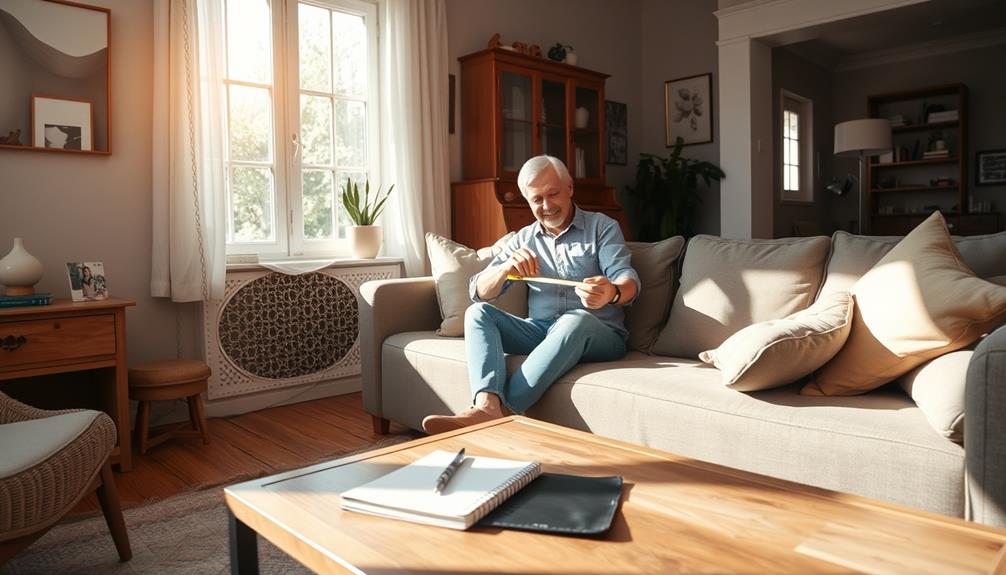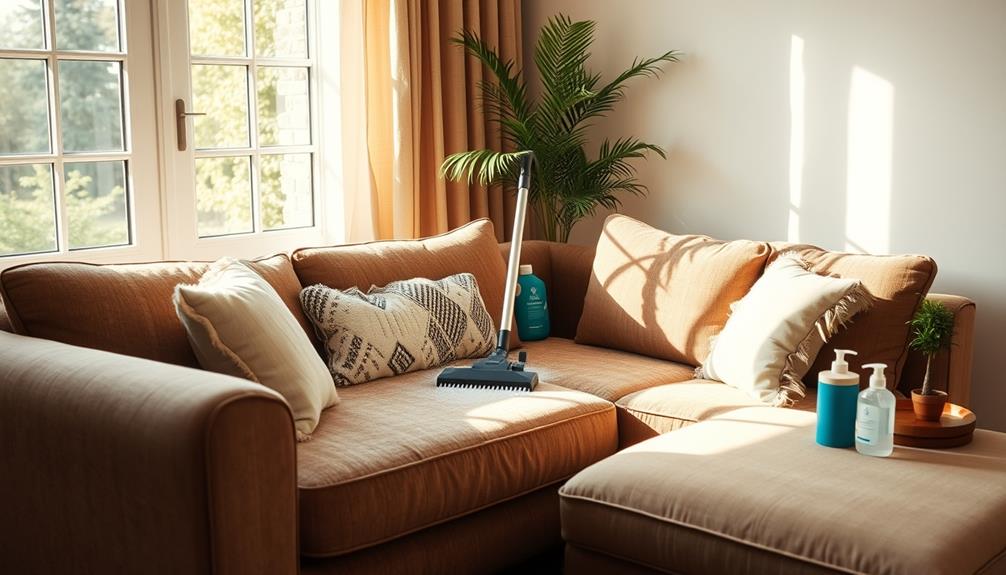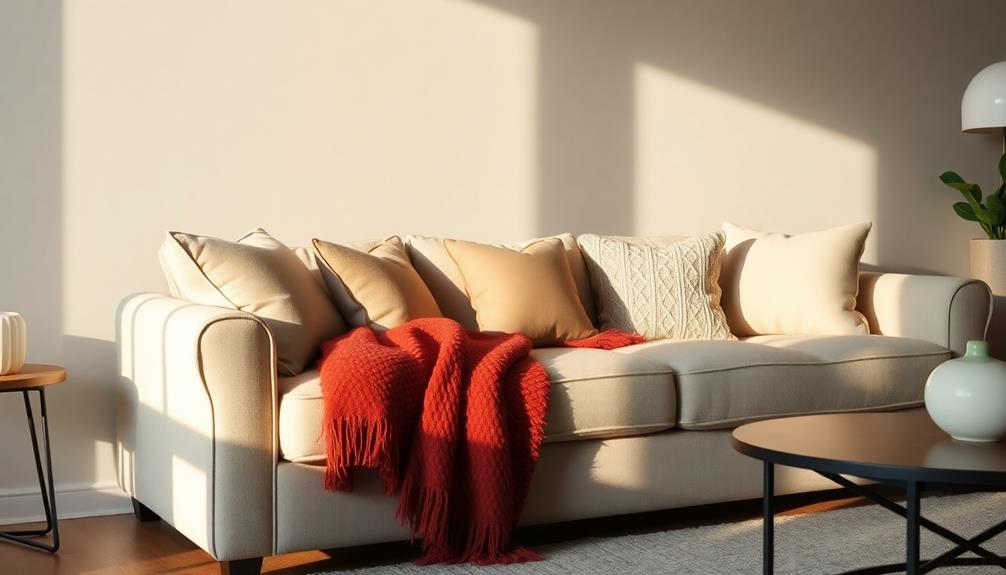To accurately measure furniture, start by using a tape measure to determine the width, depth, and height of each piece, following the standard format: width x depth x height. Remember to measure the area where the furniture will be placed, taking into account entryways, hallways, and any obstacles along the delivery path. Ensure that your furniture can fit through doors and tight spaces; it’s smart to allow for a few extra inches. Keep a list of measurements handy while shopping, and make sure to consider how each piece fits your style and space. Stay tuned for more tips on ensuring everything fits perfectly.
Key Takeaways
- Measure the width, depth, and height of furniture using the standard format: width x depth x height for clarity.
- Consider the total space requirements, including movement and additional furniture, for effective room arrangement.
- Account for entryways, hallways, and stairway dimensions to ensure smooth delivery and placement of furniture.
- Include diagonal measurements to check for fit in tight corners or around obstacles during delivery.
- Maintain a record of precise room dimensions to confidently compare with potential furniture sizes while shopping.
Importance of Accurate Measurements
When it comes to furnishing your space, accurate measurements are vital. You want to guarantee your new furniture fits perfectly within designated areas, preventing the hassle of oversized or undersized items that disrupt your design.
Additionally, considering the energy efficiency of your appliances is essential as it can influence your overall space planning and budget. When you measure the width, height, and depth of your space, you gain valuable insights into what'll work and what won't energy-efficient appliances.
Proper measurements not only save you time but also money. By avoiding delivery issues and expensive returns due to mismatched dimensions, you can make your shopping experience smoother.
Plus, knowing the exact dimensions enhances the overall aesthetics and functionality of your room, allowing for a harmonious design that complements your existing decor. Additionally, it ensures that any new furniture or decorations fit seamlessly into the space, preventing clutter or awkward gaps. This is especially important when planning special events, as it allows you to incorporate diy birthday décor ideas that suit the room’s layout while maintaining a cohesive look. Ultimately, thoughtful spatial planning combines practicality and style to create a comfortable and visually pleasing environment.
Comprehensive dimensions are essential for selecting furniture that fits seamlessly into your space. Reliable measurements promote effective furniture arrangements, guaranteeing ample space for movement and access throughout the room.
Ultimately, when you take the time to get accurate measurements, you set yourself up for success, leading to a beautifully furnished area that meets both your needs and your style preferences.
Don't underestimate the power of precise measurements; they're the foundation of a well-designed space.
Measuring Different Furniture Types
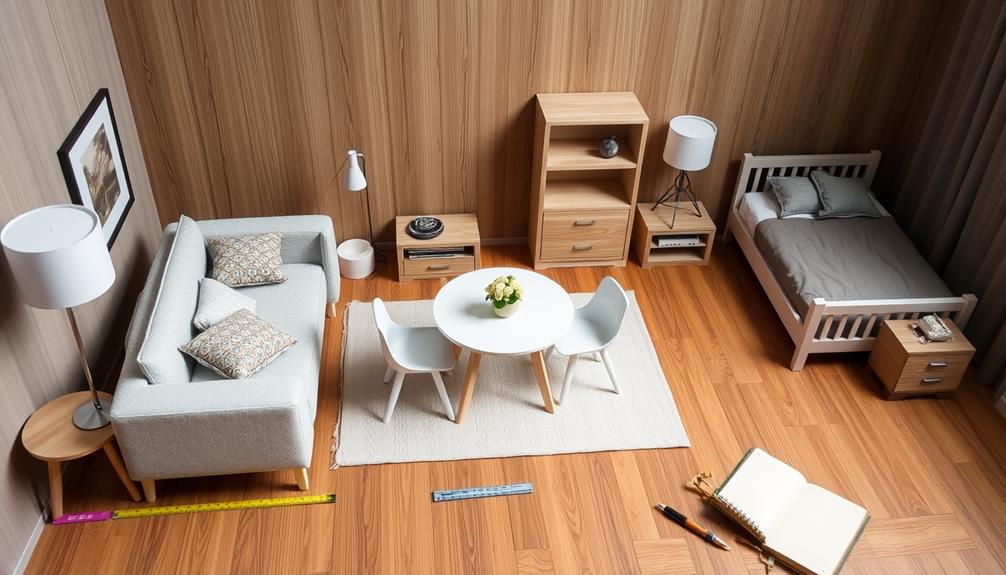
Accurate measurements are essential for different types of furniture, as each piece has unique dimensions that can greatly affect your space. When you measure a sofa, start by determining its width, including the arms, depth from the back to the front cushion edge, and height, accounting for any protruding cushions. Incorporating items that reflect modern farmhouse decor trends can enhance your space. Typically, you'll present this in the format of width x depth x height (e.g., 92 x 46 x 32 inches).
For bookcases, measure the width, height, and depth, and don't forget to check the diagonal height to verify it fits in your designated area, especially for taller pieces.
When it comes to dining tables, measure the table's width and depth, being mindful of space for chairs and movement around the table, while also considering the height in relation to the chairs for comfort.
With accent chairs, follow a similar approach: measure their width, depth, and height to confirm they complement your space and aesthetic preferences.
Assessing Space for Placement
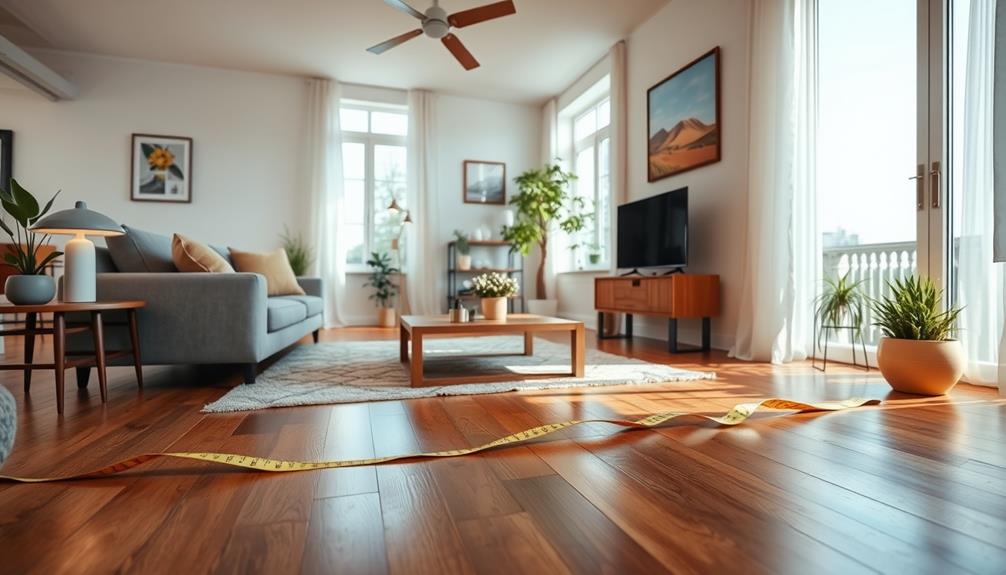
Before placing your new furniture, it's crucial to evaluate the space carefully. Start by measuring all entryways and hallways at their narrowest points. This guarantees your furniture can pass through without obstruction. Make sure the width of doorways exceeds the height of your furniture by at least four inches for smooth delivery.
Next, identify immovable objects within the space, like columns, radiators, or light fixtures, which may obstruct placement. When dealing with tight spaces, measure the diagonal height to see if your furniture can fit through corners or turns comfortably.
Lastly, don't forget to take into account stairway dimensions, including width and height, when planning for larger pieces. Use the following table to help outline your measurements:
| Area to Measure | Measurement Type |
|---|---|
| Entryway Width | Minimum width needed |
| Doorway Height | Height of furniture + 4" |
| Hallway Narrowest | Narrowest point |
| Diagonal Width | Measure at tight turns |
| Stairway Dimensions | Width and height |
Shopping With Measurements
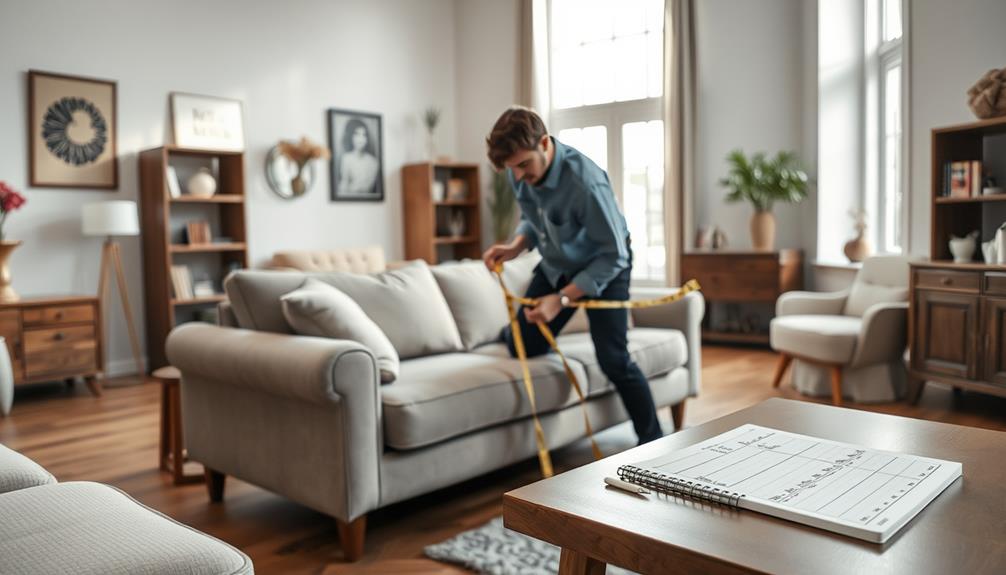
Armed with your measurements, you're ready to tackle the furniture shopping experience with confidence. Always bring the precise dimensions of your room—length, width, and height—to guarantee your new furniture fits perfectly.
Selecting the right cold medication can also be vital for maintaining comfort during the process. Start by comparing potential pieces with your room measurements, paying attention to the overall size and the scale of your existing décor.
Keep a handy list of specific dimensions—width, depth, and height—for different furniture types to avoid confusion during your selection process. This will streamline your decision-making and keep you focused on what works best in your space.
Don't hesitate to consult with furniture professionals while shopping. They can provide valuable insights, or you can use visualization tools in-store to help contextualize how your measurements will translate into your home environment.
As you shop, aim for a balance between your style preferences and functional fit. Consider comfort and usability alongside your measurements.
Delivery Considerations
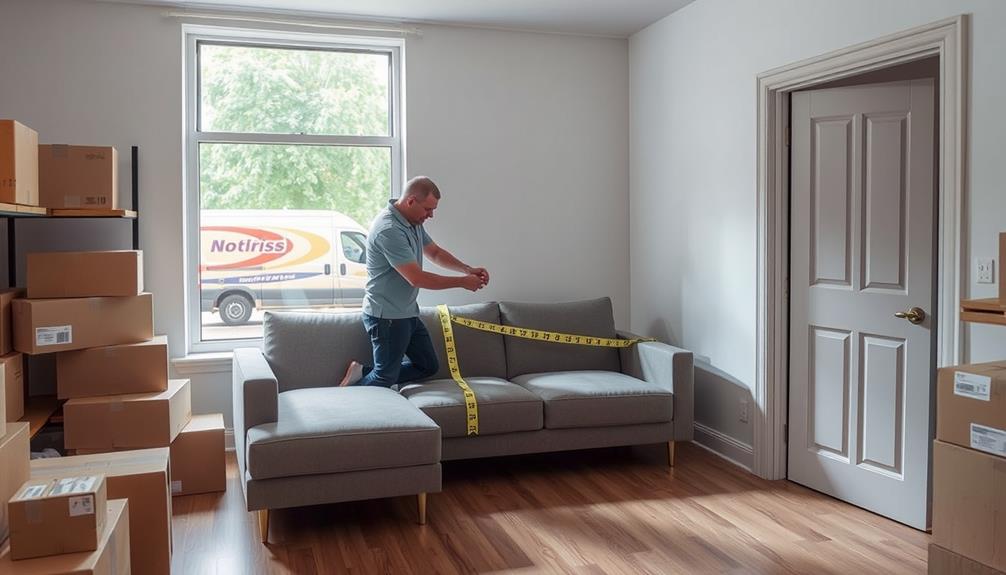
When planning the delivery of your new furniture, it's essential to measure the delivery path carefully to avoid any last-minute surprises. Start by measuring the entryways, hallways, and any turns or obstacles that could hinder the furniture's passage. Verify all measurements, including door heights, widths, and depths, to prevent fitting issues during delivery.
Identify potential obstacles like railings, light fixtures, or low ceilings that might obstruct the delivery route. These could require additional maneuvering, so it's better to be prepared. You should also measure the diagonal depth of both the furniture and the entry points to confirm they'll fit through any angles and turns.
Don't forget to inform the delivery personnel about any special considerations, such as narrow stairwells or tight corners, to facilitate a smoother delivery process. If your furniture has a back frame that protrudes, make sure to account for that when measuring.
Frequently Asked Questions
How Do You Measure the Dimensions of Furniture?
To measure furniture dimensions, you'll need a tape measure. Start with width, depth, and height. Don't forget to check for any protruding parts and guarantee everything fits comfortably in your space. Double-check your measurements!
What Is W * D * H?
Did you know that 80% of people struggle with furniture fitting? W * D * H represents Width, Depth, and Height, essential measurements that help you guarantee your furniture fits perfectly within your space.
What Measurements Do You Use for Furniture?
When you measure furniture, focus on width, depth, and height. For sofas, include arms and cushion heights. Don't forget to allow extra space for movement, especially in tight areas or entryways.
How to Measure the Size of a Couch?
Picture a giant treasure chest; to measure your couch, you'll need its width, depth, and height. Grab a tape measure, and capture those dimensions—don't forget to check for snug fits in your space!
Conclusion
Ultimately, mastering the art of measuring furniture can feel like wielding a magic wand in your home design journey. By taking accurate measurements, you'll guarantee your space is both functional and stylish. Whether it's for shopping or arranging, don't underestimate the power of a tape measure—it's your best friend in creating a harmonious living space. So, grab that tape, and let's turn your home into the envy of all your friends!
